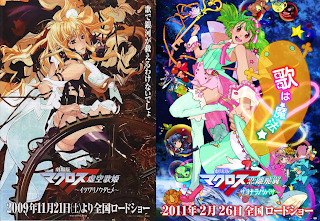
It's been a fun ride, but sadly the last of the 'main' Gokaiger mecha is upon us (I say main because there's a rumour the Gokaiger vs. Gavan movie will feature another Gokai machine) in both DX and mini-pla form. But the last usually proves to be the most exciting, and it's no exception with Gokaiger! The final machine in their arsenal is a brand new character, rather than new decos of characters that featured in previous series. Machalcon is the son of Speedor and Bear RV - the red and yellow engines from Engine Sentai Go-Onger. Machalcon takes up three candy toy boxes, however his wave is included with a re-release of the Gokai Galleon. This is because box 2 of Machalcon also comes with (scaled down versions of) Gozyujin's arms, meaning that the ultimate Kanzen GokaiOh mecha is completely self contained within the assortment.
As you could expect from a figure that takes up three boxes, Machalcon is considerably larger than his Gokai machine friends - about as long as GokaiOh is tall. That being said, the second box does feel a little on light side, merely containing Kanken GokaiOh's helmet, fist and Gozyujin's right arm. Compared to the contents of the other two boxes, I do wonder if this could have perhaps been split between them. The model looks great stickered up, lots of detail and not in dire need of any paint. I painted the mini GokaiOh swords and fist (the latter due to my utter hatred of wrap around stickers), but the stickers look like they'd do the job fairly well too.
The transformation to Go-On GokaiOh is straightforward - simply take off GokaiOh's legs and plonk him in the slots on top of Machalcon. That's it. So much like GaoGokaiOh, the combination isn't particularly exciting, unless you quite like half a robot perched on top of a cartoony formula one car that is.
What's exciting about Machalcon is the combination for Kanzen GokaiOh, the 'ultimate' mecha of the Gokaiger series. To transform, Machalcon is split into multiple components (the back end is split to make the legs, the front is folded to make the chest area) and attached to a limbless GokaiOh (hence only the need for the galleon for this combination). The front wheels are then attached to the figure via a hole at the back the the helmet (with swords clipped on) placed on the head. You can use the Gozyujin arms provided with Machalcon for Kanzen GokaiOh, but in all honesty not only are they the wrong colour but they're also short and stubby. If you own the Gozyujin minipla (and if you don't, you should because its the best in the line) the arms from that figure look MUCH better on it.
The articulation is great, allowing a variety of poses with joints that you wouldn't see on a DX version of the mecha. I found balancing issues with the legs a bit tricky at first due to the wheels, but that soon passed. The giant fist has some posability - the thumb is able to move, as is the joint section of fingers.
The minipla is a fantastic scaled down, posable representation of both Machalcon and Kanzen GokaiOh, but the set suffers from one flaw that prevents me giving it full marks. That flaw being the same one any version of Kanzen GokaiOh suffers from, and the main flaw of the series mecha - an abundance of spare parts. Certainly the assortment is self contained, but this so called 'ultimate' combination leaves out all of GokaiOh's limbs and the majority of Gozyujin, which is pretty disappointing when you consider some the final mecha that have come in the past using all the mecha from its respective series.
Still, it's a great end to what's been a great line of Gokaiger toys. See you again next year for some Gobuster minipla!







